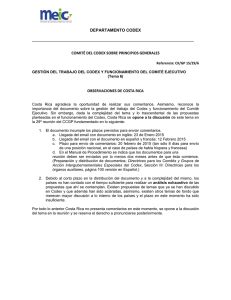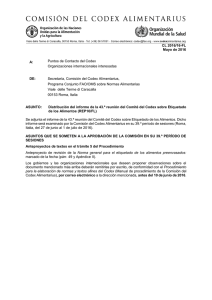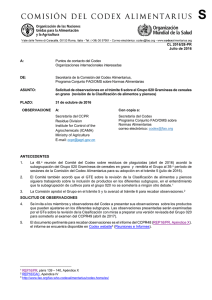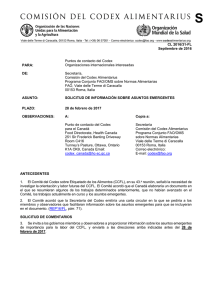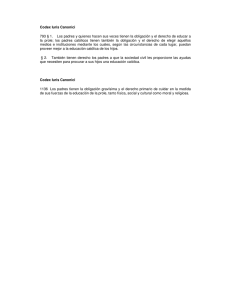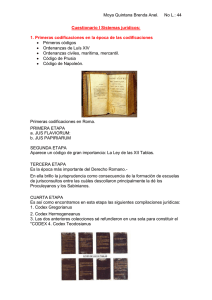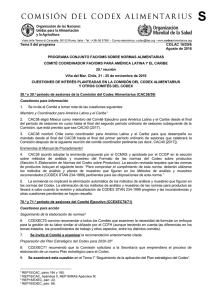Possibly the Earliest Publication From the Cortesianus Codex
Anuncio
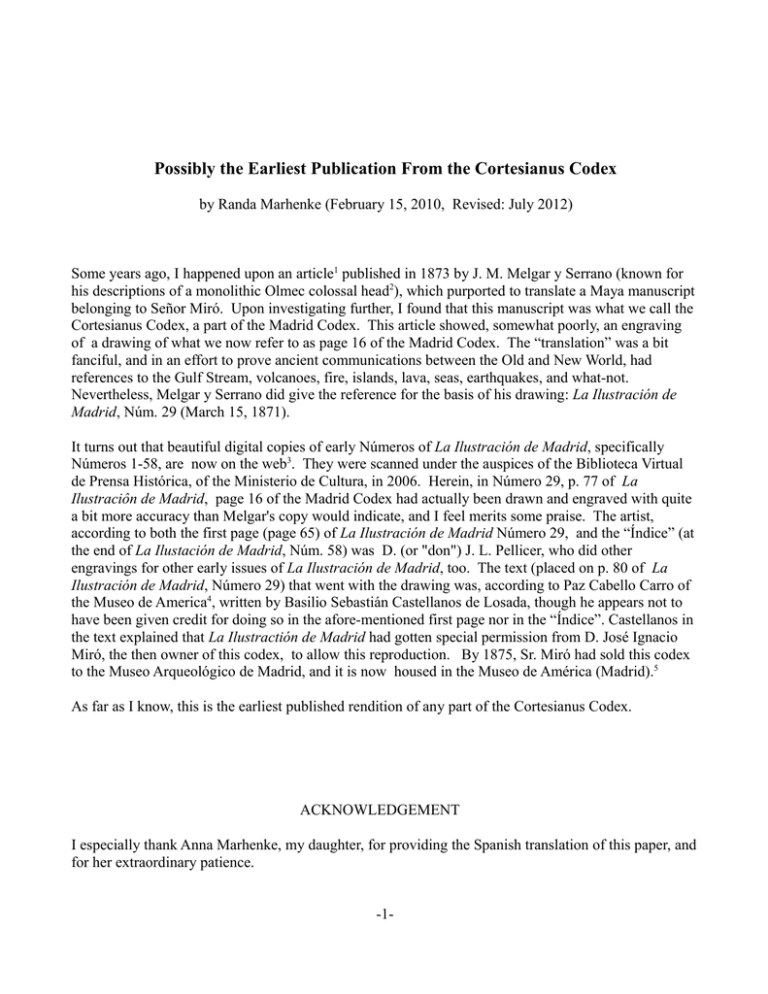
Possibly the Earliest Publication From the Cortesianus Codex by Randa Marhenke (February 15, 2010, Revised: July 2012) Some years ago, I happened upon an article1 published in 1873 by J. M. Melgar y Serrano (known for his descriptions of a monolithic Olmec colossal head2), which purported to translate a Maya manuscript belonging to Señor Miró. Upon investigating further, I found that this manuscript was what we call the Cortesianus Codex, a part of the Madrid Codex. This article showed, somewhat poorly, an engraving of a drawing of what we now refer to as page 16 of the Madrid Codex. The “translation” was a bit fanciful, and in an effort to prove ancient communications between the Old and New World, had references to the Gulf Stream, volcanoes, fire, islands, lava, seas, earthquakes, and what-not. Nevertheless, Melgar y Serrano did give the reference for the basis of his drawing: La Ilustración de Madrid, Núm. 29 (March 15, 1871). It turns out that beautiful digital copies of early Números of La Ilustración de Madrid, specifically Números 1-58, are now on the web3. They were scanned under the auspices of the Biblioteca Virtual de Prensa Histórica, of the Ministerio de Cultura, in 2006. Herein, in Número 29, p. 77 of La Ilustraciôn de Madrid, page 16 of the Madrid Codex had actually been drawn and engraved with quite a bit more accuracy than Melgar's copy would indicate, and I feel merits some praise. The artist, according to both the first page (page 65) of La Ilustración de Madrid Número 29, and the “Índice” (at the end of La Ilustación de Madrid, Núm. 58) was D. (or "don") J. L. Pellicer, who did other engravings for other early issues of La Ilustración de Madrid, too. The text (placed on p. 80 of La Ilustración de Madrid, Número 29) that went with the drawing was, according to Paz Cabello Carro of the Museo de America4, written by Basilio Sebastián Castellanos de Losada, though he appears not to have been given credit for doing so in the afore-mentioned first page nor in the “Índice”. Castellanos in the text explained that La Ilustractión de Madrid had gotten special permission from D. José Ignacio Miró, the then owner of this codex, to allow this reproduction. By 1875, Sr. Miró had sold this codex to the Museo Arqueológico de Madrid, and it is now housed in the Museo de América (Madrid).5 As far as I know, this is the earliest published rendition of any part of the Cortesianus Codex. ACKNOWLEDGEMENT I especially thank Anna Marhenke, my daughter, for providing the Spanish translation of this paper, and for her extraordinary patience. -1- NOTES AND REFERENCES 1. Melgar y Serrano, J. M., JUICIO SOBRE LO QUE SIRVIO DE BASE A LAS PRIMERAS TEOGONIAS 1873 TRADUCCION Del Manuscrito Mayo [sic] PERTENECIENTE AL Señor Miró. Observaciones sobre algunos otros datos encontrados en los monumentos y manuscritos mejicanos, que prueban las comunicaciones antiquísimas que existieron entre el viejo y el nuevo mundo. Imp. de R. de Zayas, Veracruz. Available from: http://www.archive.org/details/juiciosobreloque00melgiala 2. In 1862, José María Melgar y Serrano came upon an (Olmec) monolithic head in the state of Veracruz, Mexico. He published about it in the Boletín de la Sociedad Mexicana de Geografía y Estadística de la República Mexicana in 1869 and again in 1871. The second of these two articles (in Segunda Época, Tomo III, pp.104-109) is purported by Soustelle, pp 9-10, to have stated his theory of the migrations of people from the Old World to the New World, since he felt this colossal head to have “negroid” features. Some of the first article, translated, is given in: Adams, Richard E. W., Prehistoric Mesoamerica, 3rd edition, University of Oklahoma Press, p. 50. 2005 and in: Soustelle, Jacques and Helen R. Lane, translator, The Olmecs: The Oldest Civilization in Mexico, 1984 Doubleday, New York, p. 9. The first article, in the Boletín de la Sociedad Mexicana de Geografía y Estadística de la República Mexicana of 1869 (Segunda Época, Tomo I, Mexico City), is available from: http://books.google.com/books?id=570BAAAAYAAJ Melgar's article is entitled “Notable escultura antigua” and is at pp. 292-297. 3. La Ilustración de Madrid : revista de política, ciencias, artes y literatura March 15, 1871 imp Imprenta de El Imparcial (Madrid). Núm. 29 Issues of the years 1870-1872 are electronically available from the Biblioteca Virtual de Prensa Histórica, Ministerio de Cultura of Spain, at: http://prensahistorica.mcu.es/es/publicaciones/numeros_por_mes.cmd?idPublicacion=6133 or: http://tinyurl.com/ybpyo25 4. Cabello Carro, Paz , “Un siglo de coleccionismo maya en Espana: de 1785-1787 a 1888” 1986 in: coord. por Miguel Rivera Dorado, Andrés Ciudad Ruíz, Los mayas de los tiempos tardios, Volume 1 of Publicaciones de la S.E.E.M. (Sociedad Española de Estudios Mayas), ISBN: 84-398-7120-1, Madrid, pp. 99-120. http://dialnet.unirioja.es/servlet/fichero_articulo?codigo=2775307&orden=0 5.George E. Stuart, 1992 “Quest for Decipherment: A Historical and Biographical Survey of Maya Hieroglyphic Investigation”, in Elin C. Danien , Robert J. Sharer, New Theories on the Ancient Maya, University Museum Monograph 77, University Museum Symposium Series Volume 3, Philadelphia, p. 21. -2-
